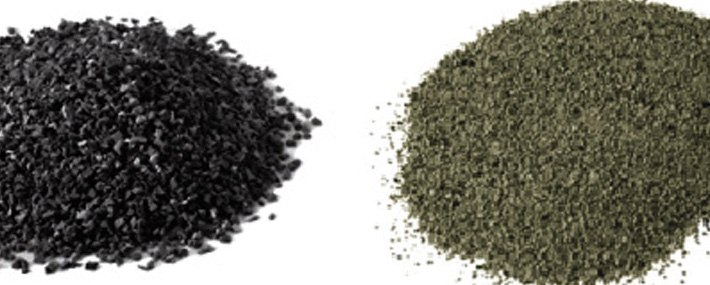Bentonite and Marconite have certain similarities, they are both ground enhancement materials used to lower the resistance to earth. However, there are a number of differences between the products and the applications they should be used for.
Bentonite Moisture Retaining Clay
Bentonite is often used to reduce the resistance between the soil and earth-electrode (earth rod or earth mat) by retaining moisture. The naturally occurring Bentonite compound consists mostly of montmorillonite, the sodium based clay swells to many times its size when mixed with water.
Available in both powder and granular form, preference usually lies with granular form as it is often considered easier to handle and prepare.
Marconite Conductive Aggregate
Marconite is a synthetic material manufactured specifically for earthing purposes. Utilising specific raw materials and minerals, mixed in carefully controlled ratios. The Marconite compound then goes through a range of manufacturing processes and thermal treatments, designed to create a consistent, fit-for-purpose earthing compound.
The resulting precisely measured, granular mixture is virtually dust free and has exceptional electrical properties.
Bentonite vs Marconite
Resistivity
All earthing aggregates can be called conductive with a resistivity of 5 ohms metres or less. Bentonite has a typical resistivity level of around 3 ohms.m. Marconite with a resistance level of .001 ohm.m, has a far low resistance than its competitors, even when mixed with cement, the resulting resistance level is still only 0.19 ohms.m.
Chemical balance
As Bentonite is a naturally occurring material, there can be anything from 15-20% impurities which can be corrosive and will corrode any earth-electrode connections, resulting in earthing system failure, which can cause costly damage and lengthy repairs.
Marconite is a chemically inert compound and as such is non-corrosive to steel or copper, it does not attack cement structures and has a pH level within the neutral range. Allowing Marconite to be used with all conventional types of cement, as well as most proprietary resin-based cements, adhesives and gypsum plasters.
Versatility
One of Bentonite’s key features is also one of its weaknesses. The ability to absorb rain water once installed, helps increase the conductivity but also makes the material liable to drying out and therefore shrinking or even being washed away entirely. Therefore requiring maintenance every few years, such as adding additional water or salts to continue to achieve the desired earth values.
Suitable for most ground conditions, Marconite becomes a permanent solid structure, especially when mixed with concrete and is not prone to these problems.
High strength
Due to its clay-like nature, Bentonite has limited strength levels, this added to the materials expansion when mixed with water, makes it unsuitable to be included within building structures themselves. Whereas Marconite can achieve strengths higher than Grade 25 concrete and therefore is suitable to be used as part of the building structure.
Cost effectiveness
When it comes to cost, there is a clear difference between Bentonite and Marconite. Being considerably cheaper, Bentonite offers an earthing solution for cost conscious buyers, although the cost of maintenance every few years should be considered, it can still work out as an effective solution.
Marconite on the other hand is a more expensive product, however once installed, the permanent earthing solution requires no ongoing maintenance so this should be factored in when considering the more costly material.
Ease of use
Both earthing compounds are simple to instal as a backfill for earth-electrodes. However as Marconite can be used to replace sand and aggregates within conventional concrete mixes, it should be carefully mixed in ratios of 3 parts Marconite and 1 part cement by weight, with the addition of 1 litre of water per 4kg total mix.
Due to the slightly more complicated nature of using Marconite within a permanent concrete structure, it is available in a premixed bag. The 25kg premix sack contains pre-measured and pre-mixed ratios of Marconite and Portland Cement powder, requiring only 5 litres of water. Reducing on-site confusion and ratio errors. However the hydroscopic Portland cement used within the premix means it must be used within 6 weeks of purchase.
Marconite and Bentonite each have their own advantages and disadvantages for different applications, with cost and longevity of installation often being the deciding choosing factors. For more information on which earthing compound is best for your needs, please contact our Sales Team for advice.
If you found this article helpful or interesting, please share it!














